If you want to get a top Google ranking, then we say you follow the old saying: When in Rome, do as the Romans do. When having a website you want to get the best display on Google for, do what Google would like you to do.
We gathered a list of 22 must-dos, things that Google said you should be doing in order to rank high in SERPs.
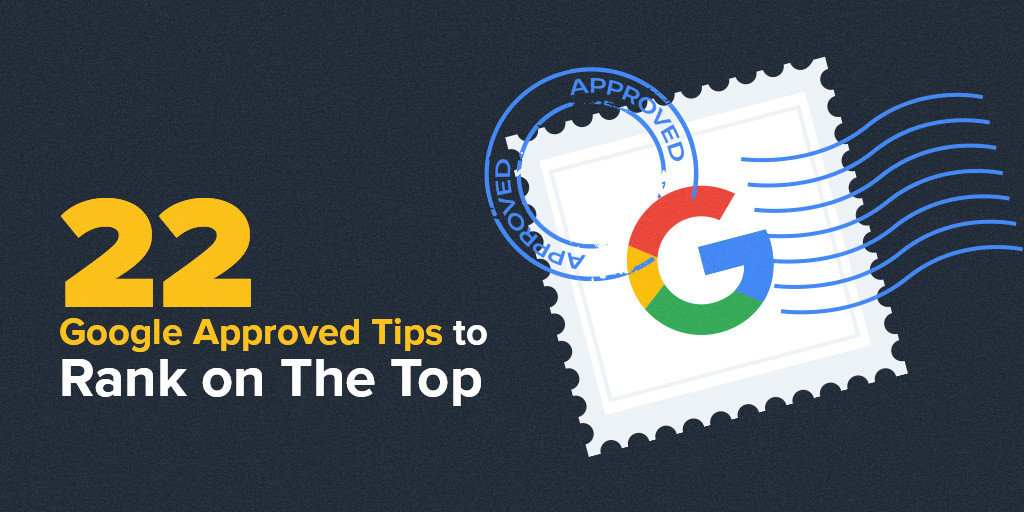
How to rank high on Google fast. That’s everyone’s concern. After all, Google (and search engines in general) is the sole playground where our websites and their whole activity take place. We display, play, fight, and sell online. The offline environment is another story. But most people forget something. It’s that success doesn’t come for granted, but it’s rather built. To better there’s bitter, said someone once.
Speaking of which, here’s a list with pieces of advice directly from Google that will help you boost your traffic and rankings. All get big thumbs-up from Google. Check for yourself:
- Craft Smart Titles and Snippets in Search Results
- Use the “Description” Meta Tag
- Avoid Displaying Important Names, Content, or Links in Images
- Add Structured Data Markup
- Create a Custom 404 Page
- Use the Right Mix of Keyword Phrases
- Give Visitors What They’re Looking For
- Consider Implementing AMP
- Create Search-Friendly URLs
- Google Ads Don’t Guarantee Top Position in SERPs
- Optimise Your Twitter Page for Google Ranks
- Pay Attention to Page Speed
- Give Googlebot Access to the Code Data
- Get a Listing on Google My Business
- Optimize for Answer Boxes
- Manage Internal Linking
- Be Mobile-Optimized
- Use Synonyms in Content
- Do Image Optimization
- Switch to HTTPS
- Make Sure to Use Correct Redirects
- Debug Your Pages
Google is smart – they know how they like their food. Google is a fully automated search engine set to explore the web on a daily basis and find those websites that deserve to be on the first pages. Many ask themselves what’s the best way to make Google like them in order to rank high in SERPs. You’ve got great content, rich and good link profile, yet Google doesn’t place you in top positions. So what should you do? We gathered all the things Google encourages their users to apply in order to rank on top positions and compiled them.
We wanted to see if Google really has the answer to all questions and if yes, we would’ve easily declared our quest ended. So we typed a query into the search bar: How to make Google like you? And this is what we got:

Apparently, we didn’t find an answer to our question. So we decided to take the research a little step further and search related phrases and ranking pages of this long tail keyword. We looked it up on Keyword Tool & Content Assistant and, again, we had a lot of fun on the returning results.

Things are simple. The truth is there’s no thorough and comprehensive list of everything Google says you should do to get a top position.
There are tops and lists, but there’s little clear-cut answer to what’s there to be done in order for Google to like you and lift you high in SERPs.
Before setting out to discuss what Google says you should check if you’re hunting for first positions in search results, remember this. You should make sure to get your website Google-friendly in all aspects, avoid implementing shady practices on your website, hence taking care to not be that person who gives a black eye to the industry of SEO and marketing when trying to rank high.
Among many others, Neil Patel summarizes what we know so far and tells us the most important things of getting up in SERPs. Neil himself points out the fact that getting a top Google ranking is hard and takes a lot of work, resources, and time. He shares 3 ways you can rank #1 on Google, and you should definitely know them.
The following 24 steps Google listed as paramount to rank high in SERPs are the baby steps to a greater tomorrow.
It’s good to know the overall picture of what you should do to get your website on the very top of Google search. However, you should definitely check all the things Google promised will make you attractive to the search engine algorithms.
Find all missed marketing tactics and use them for your very benefit. Just like in this meme, find the ingredients used in your (apparently) unattractive-to-Google website, and “googlize” them. Your website ranking story will be different.

1. Craft Smart Titles and Snippets in Search Results
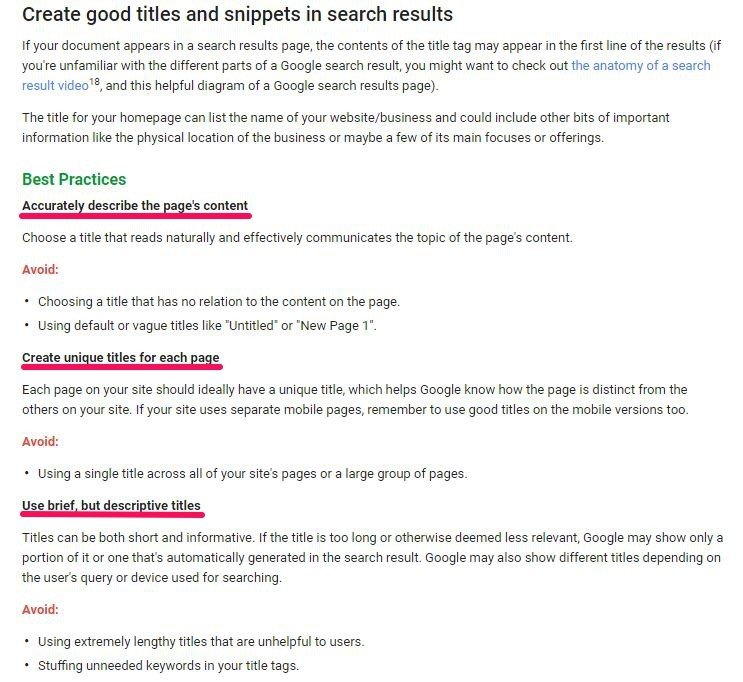
source: https://support.google.com/webmasters/answer/7451184?hl=en
As always, content is king. And the king must be served right in order to be happy and thrive. It’s important to pay attention not only to the page content, but also to the one in the title tags, URLs, snippets, and alt tags. We’ve underlined the most important things for which you should optimize your content.
There are thousands of instances across the web where pages and websites use and display unrelated and dull titles. This prevents them from being targeted by the Google algorithms and be ranked higher in SERPs. Here’s one example:
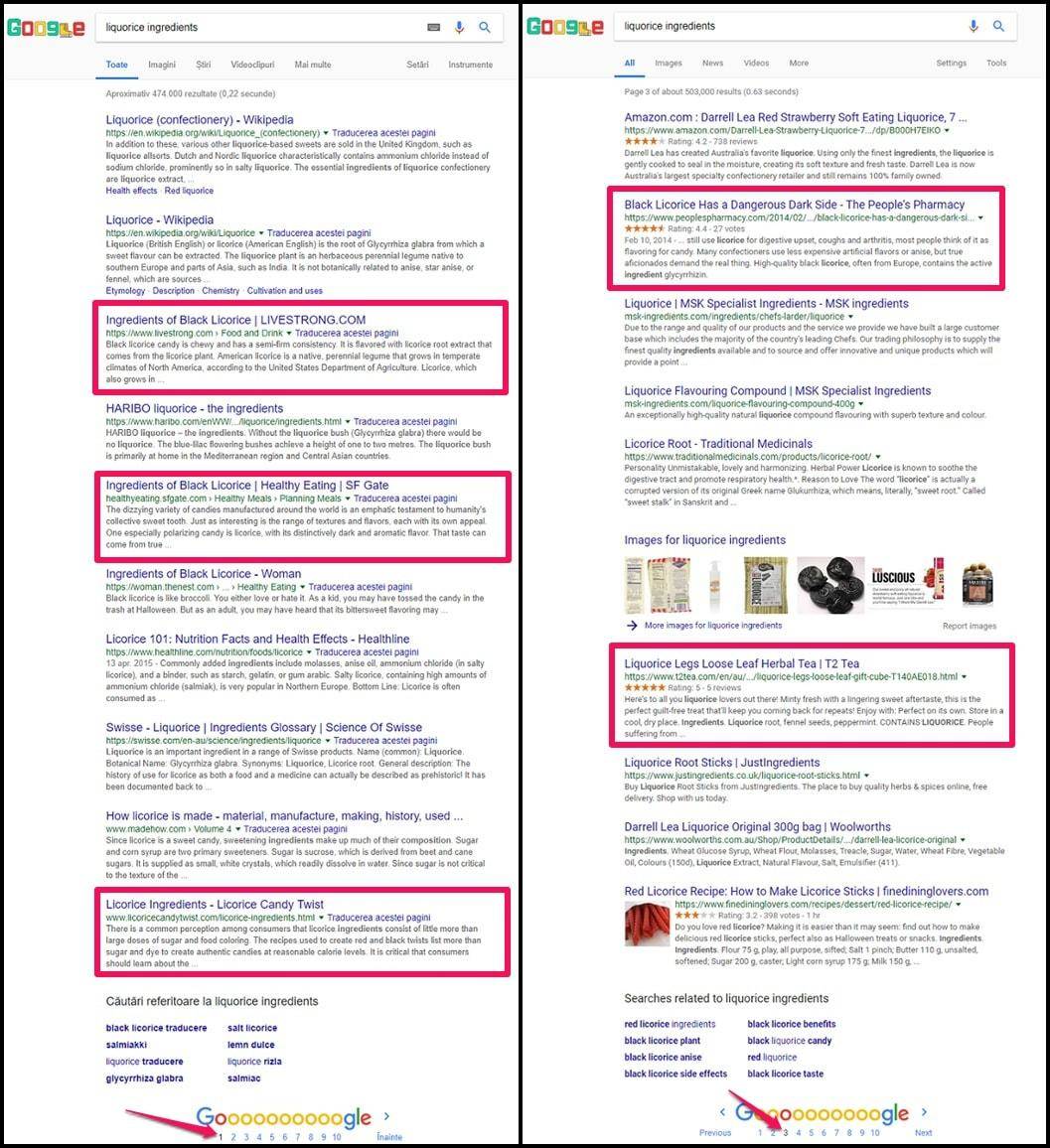
2. Use the “Description” Meta Tag
The description meta tag provides the search engine a concise yet comprehensive explanation of the page content. In addition, Google might use them as snippets for your page when popping out in search results. Often times, people are drawn to click through a page when, after skimming the SERPs and reading the titles, to check the text in the meta description. This both helps Google’s algorithms to better understand your page contents, and the user, who’d be more likely to land on your page if the words do the work.

However, it’s possible for Google to skip your meta description text and instead select something more relevant for the query from the page contents. In case Google cannot find something worth mentioning from your page content, it’ll turn to your description meta tag – hence, it’s always useful to have one, just in case they’ll need it.

These are the do’s when talking about successful description meta tags:
- write a clear, accurate, and relevant summary of your page content;
- make sure it’s long enough to fit the display in search engines;
- write information that both informs and raises interest;
- similarly to title tags, use different descriptions for each page.
If you want to rank high both in Google and in the users’ eyes, avoid doing the following:
- write irrelevant descriptions, unrelated to the page content;
- opt for broad descriptions such as “This is a web page” or “Page about football equipment”;
- do keyword stuffing;
- take a snippet from your text with copy-paste, instead of writing something truly catchy and relevant;
- use one description for all or the majority of your pages.
3. Avoid Displaying Important Names, Content, or Links in Images
Whenever you want to convey a message containing names, content, or links, use text instead of images. This way you make sure the search engine can crawl your content, given that the crawlers can’t recognize text comprised of graphics. However, if you still want to display words in an image and not do it again in the page content, you can use ALT attributes. Make sure that the ALT attribute is short yet descriptive, faithfully describing the meaning of the photo as it can be easier both for Google bots to index it and for users to find the image bearing it in their SERPs.
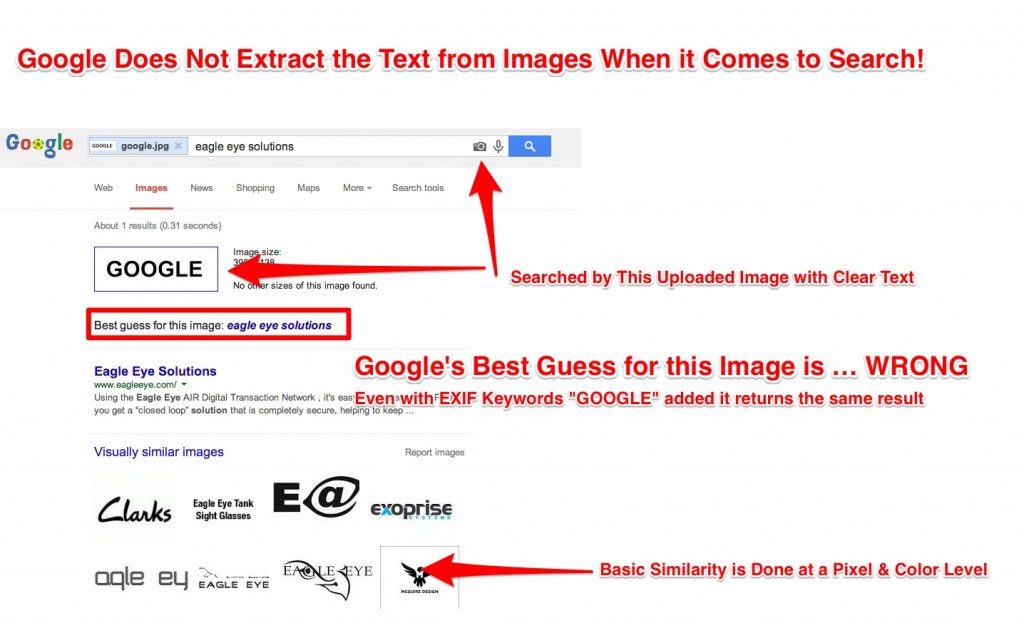
4. Add Structured Data Markup
Structured markup data is a code used by your website to make Google better understand the content on a page. This data can improve your position and page display on search. The main role of the structured markup data is to offer a thorough search experience to the user and turn them into a possible customer. Google Search also uses structured data to show rich and complex result display, providing more information within narrower borders and in more eye-catchy ways.
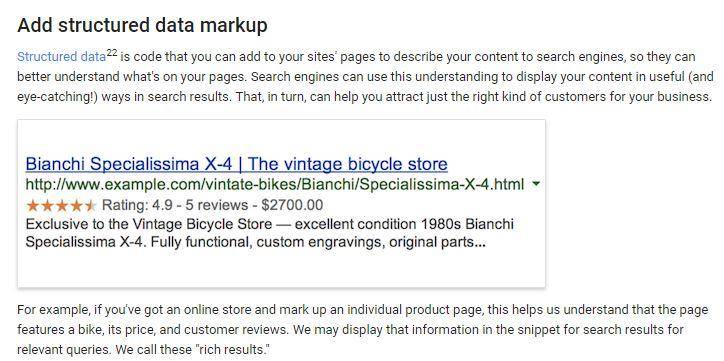
source: https://support.google.com/webmasters/answer/7451184?hl=en
Simply put, structured data is a systemized format for giving information about a page and hence better and more efficiently classifying the page content. By helping Google understand your page content, you convince them to place you higher in SERPs.
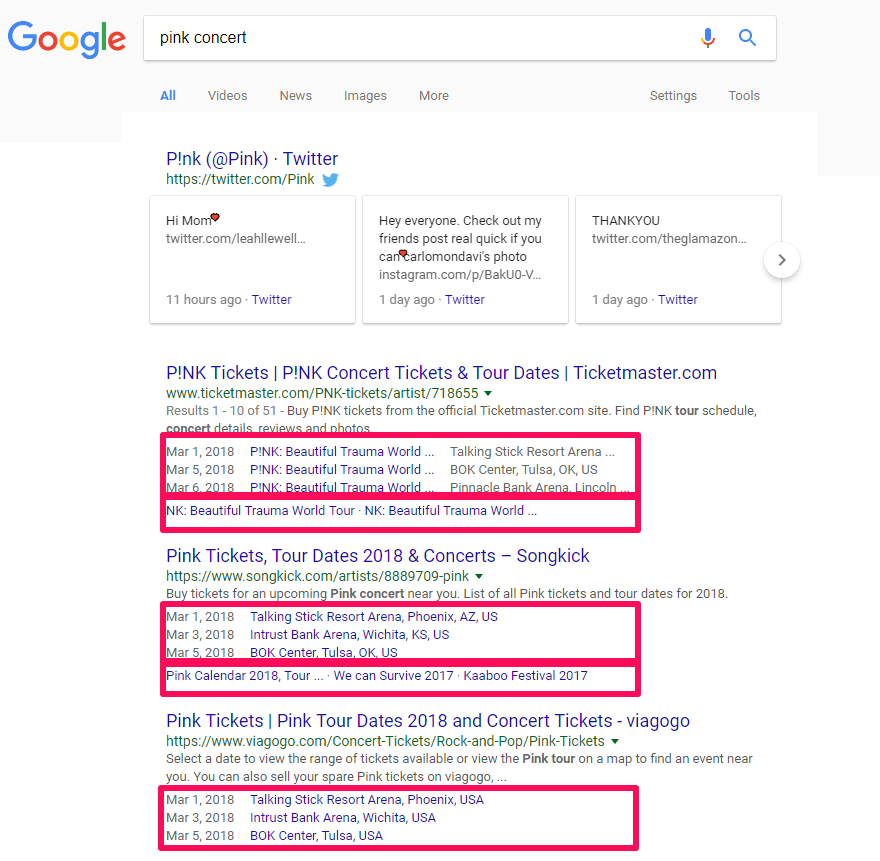
Structured markup data is of great use to businesses. For example, you can provide significant key business details such as physical location, contact info, prices or price range, and marketing details like official name, logo, social profiles and many more. Your business information will get more exposure in search results, Knowledge Graph cards, and Google Maps.
Google My Business is a great way to start getting your website in front of potential customers. Claim or create a new business, verify yourself as the owner of that listing, and provide/edit details such as address, contact info, business type, photos, reviews, feedback, social links, comments. This way you’ll definitely pop with the right info back to user queries.
Google developed a Structured Data Testing Tool which is free and extremely easy to use. It’s meant to test your markup and verify the accuracy of your data.
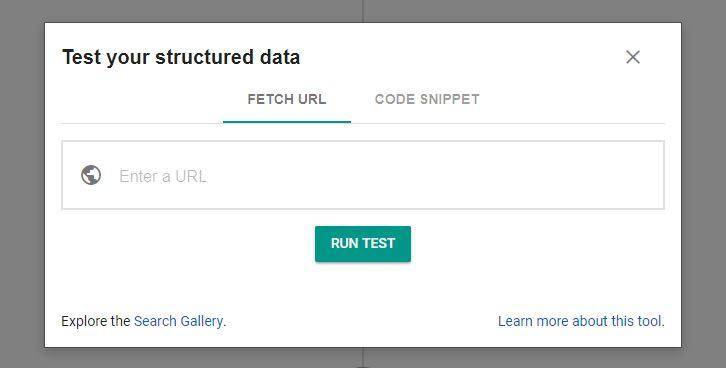
Another smart move would be to enable breadcrumbs. They trail the page’s position in the site hierarchy, ultimately forming a chain. Users can easily track pages, one level at a time, by starting from the last breadcrumb up to the first one. Google Search is interested in displaying breadcrumbs in markup format, hence better guiding users through.
Users can fill in different queries, and even if their search might return the same webpage, the breadcrumbs will know how to categorize the content in accordance with the Google Search query – example: Books › Authors › Ann Leckie › Ancillary Justice or Books › Science Fiction › Award Winners.
To find out more about structured markup data and the penalties for deploying spammy markup, go read this other article we’ve posted not long ago.
5. Create a Custom 404 Page
It’s often happening that users bump into a page that doesn’t exist on your site anymore, for various reasons: they follow a broken link or a mistyped URL. Setting a 404 page that nicely informs users that the page isn’t working and redirects them to relevant ones can greatly influence users’ experience, hence click-through rate and ratings. Here’s Google’s reasoning behind why custom 404 pages are so important.

404 pages usually contain a message guiding users to their root page. One twist would be to provide some extra links besides the homepage one, links to popular or related content on your site. This way you’re more likely to retain and eventually convert them. Google says you can also use Search Console to find the sources of URLs responsible for “not found” error status.
As for what you should avoid, here’s what Google tells us to do:

6. Use the Right Mix of Keyword Phrases
Content comes in a variety of forms, all meant to entertain and satisfy as many of the human senses as possible. We are witnesses to the competition blogs, websites, outlets, and every possible business is in. The best thing is to know what your readers want and feed them that.

source: https://support.google.com/webmasters/answer/7451184?hl=en
Google recommends us to create a powerful and useful mix of keywords, one that would leave your competitors far behind and will make your content more likely to be found by user searches. Remeber that you serve a wide variety of user types, both new and experienced ones. Hence those with a heavier load of knowledge will know how to refine their search and introduce more specific keywords in order to get the results they’re looking for. Anticipating the different and various search behavior can really benefit your piece of content when writing it. Google provides two tools that can help you fit your content for the competition ahead: Google AdWords with their Keyword Planner and Google Search Console (find the top searched queries your page ranks for and what are the ones who drew the most readers).
Consider providing interesting, useful, and unique content. You can write news stories, user case studies, original pieces of research. Furthermore, write easy-to-read, grammatically correct and attractive text and organize your topics clearly (you can use headings and break up the content in divisions) as these score a lot when speaking of text readability.
Your content should be the means to make your reader come back. Make it new, exciting, fresh. When using keywords and answering to users’ questions (you can find many with auto-complete in the Google search bar) make sure you’re not doing keyword stuffing and the text stays relevant and natural. Don’t (only) optimize for search engines, but for your readers. In the end, they’re your customers.
7. Give Visitors What They’re Looking For
Chocolate is intoxicatingly attractive to those with a sweet tooth. The same mechanism works for quality content. The more high-quality page content on your website, the more visitors, conversions, fans, mentions, positive sentiment, and credits to you, says Google. Quality content will also appeal more to webmasters, driving them to link to you more and more often.
Whenever crafting content for your web pages, think of what words will most likely attract readers to your content. In addition, scan the web, the competition, and your own page to see what concerns people most. Take extra care of your homepage – that one might be the most important landing site for users.
8. Consider Implementing AMP
A study from DoubleClick by Google conducted an analysis on more than 10,000 mobile web domains and stated: “We found that the average load time for mobile sites is 19 seconds over 3G connections. That’s about as long as it takes to sing the entire alphabet song!”.
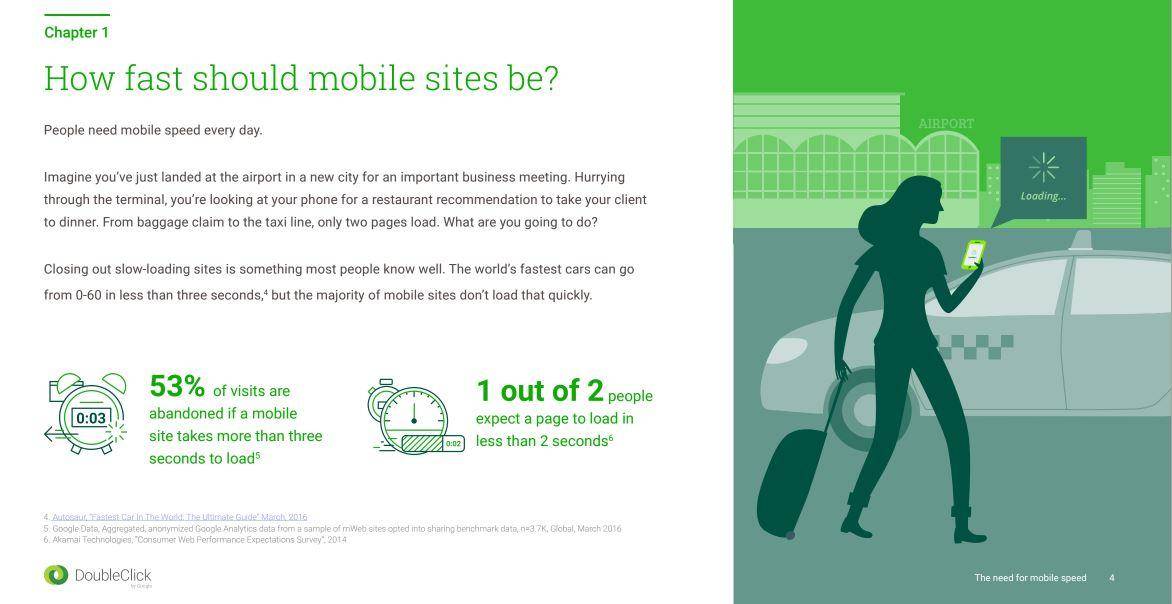
source: www.doubleclickbygoogle.com
Although not yet an official ranking factor, AMP is paramount for site quality and user experience, a fact backed up by well-known webmasters.
More than 50% of mobile users decide to abandon a webpage if it takes more than 3 seconds to load. Therefore it’s high time you considered implementing it on your mobile if willing to rank better in Google Search. He’s a how-to guide on how to use Google AMP to make your website rank higher on Google.
9. Use Search-Friendly URLs
Similar to creating fit and appropriate title tags and snippets, so it goes for URLs too. Creating descriptive yet concise URLs can truly help your fans and fellow marketers link to you. Extremely cryptic links that contain various characters, letters and numbers are chaotic an irrelevant. Easy, SEO-friendly and user-friendly texts in the URL will encourage people to link to you more, make your site better organized, and provide potential users an appropriate text for their anchor texts when linking to you.
![]()
Moreover, simple text URLs provides both Google crawlers and users with more information than a highly coded and messy parameter would. Here’s an in-depth study on how the title and URL influence rankings.
10. Google Ads Don’t Guarantee Top Position in SERPs
Advertising with Google won’t have any effect on your site’s presence in our search results. Instead of paying for your position in Google, try to deploy transparent, relevant, organic, in a word natural means to get your page up in SERPs.

There’s nothing more powerful than listening to and obeying the common sense rules of doing your job first, and maybe only after paying for some boost. True, lasting fame doesn’t come with money, but with working hard. And this will eventually pay off and make you stand among the first search result in Google.
More so, it’s usually nagging the user, as your paid ad featuring your web page doesn’t always really deliver an answer to the query, but rather sticks among the first results without being of any use (it contains 1-2-3 keywords). It’s not relevant to the query.
11. Optimise Your Twitter Page for Google Ranks
Tweets are now indexed on SERPs. For a second time in a row, Google partnered with Twitter in 2015 to get full access to the so-called Twitter firehose of thousands of tweets spread every second on the web.
Most users are not satisfied with the information a couple of hours old, hence they want the freshest piece of news they can get. No need to emphasize that you should start optimizing your tweets with fit keywords and length so to serve both your interest – of attracting readers – and users’ interest – of finding the piece of content they’re after.
12. Pay Attention to Page Speed
Having previously talked about AMP, it’s time for you to know that the common belief indicating that speed is sometimes everything has now become a regulated fact. Folks wish their questions to be answered fast; in fact, as fast as possible.
| 53% of visits are abandoned if a mobile site takes longer than three seconds to load. That’s a big problem. | |
 |
Daniel an |
| Global Product Lead, Mobile Web at Google | |
Page speed has been used as a ranking signal for some time now, says Google, but this year it comes with a twist – starting July 2018, page speed will not only address desktop searches but mobile searches as well. In terms of being a ranking signal, of course.
Besides, page speed primarily influences how people experience your site services, and they easily bounce off when having to wait for too much time for the page to load.
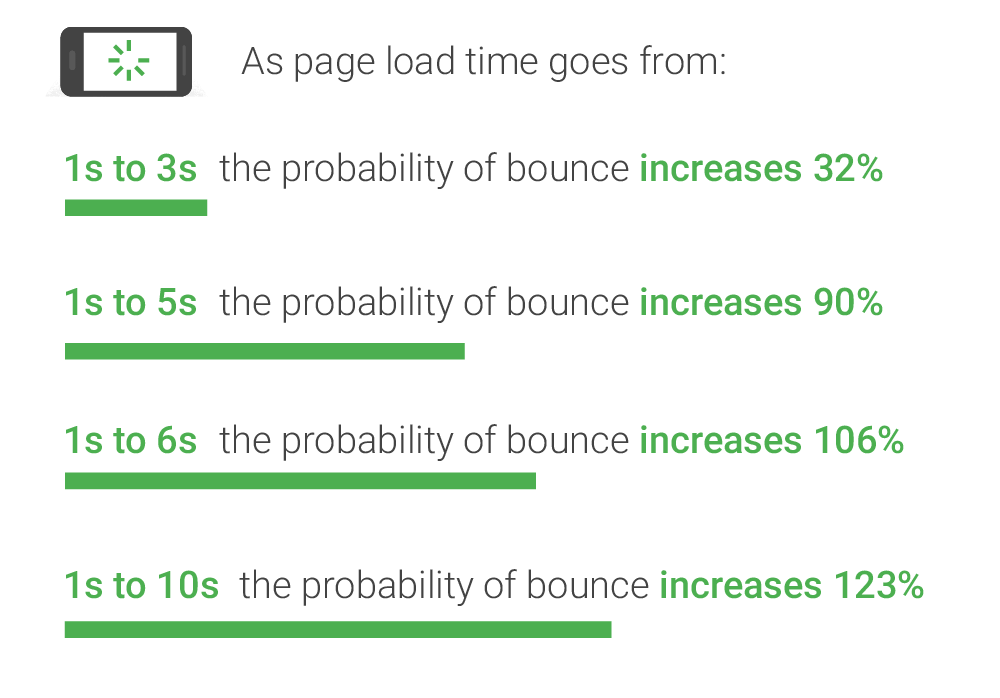
source: www.thinkwithgoogle.com
This update will mainly affect the sites offering the slowest user experience. However, the page speed ranking signal will not weigh heavier than that of great, relevant, popular content. Hence, the page can still rank high if the content is a big asset in the game.
13. Give Googlebot Access to the Code Data
Unlike in the old times, the web is now filled with a gazillion rich, complex, great websites that roll heavily on JavaScript. Google needs access to your JavaScript, CSS, and image files on your website in order to be able to see and display the page the natural way a user would see. This will help crawlers index your content better. Moreover, they say this permission benefits your context in the sense that it’s better indexed, while the pages are better rendered. Especially on mobile.
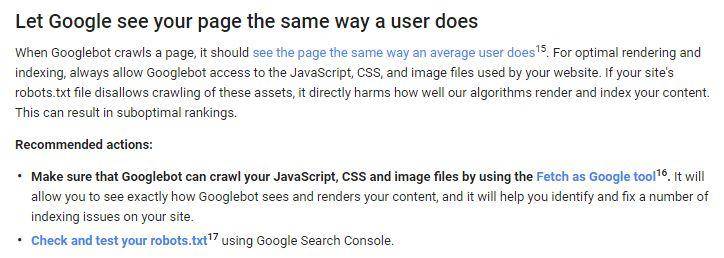
source: https://support.google.com/webmasters/answer/7451184?hl=en
Google recommends you to use their tool Fetch as Google to allow the Googlebot to crawl your JavaScript, CSS, and image files. The cool thing is that you can see exactly the way Google renders your page and will help you know beforehand what indexing errors to avoid. Moreover, you can analyze and test your robots.txt files using Google Search Console. More on this type of files and the mistakes you should avoid lest your rankings would drop, you can find in our article.
14. Get a Listing on Google My Business
As previously said, if willing to benefit from structured data markup in Google Search or Maps, hence gain extra visibility, you should definitely use Google My Business service too.
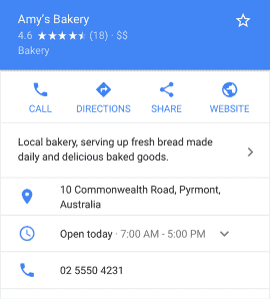
According to Google, there are multiple benefits when opting to create a listing in Google My Business: it’s free, your business gets in the spotlight in searches, easily attract customers by simply sharing helpful information which otherwise is already on your website but not visible enough, take charge of what people (should) see when searching for your business, update your info when needed, use enticing snapshots of your business, engage online and display ratings, and build popularity and loyalty.
Google My Business mostly benefits local businesses, hence listing your brand this way should be part of your local SEO strategy.
15. Optimize for Answer Boxes
Everybody dreams of being up there, ranking no. 0 (which is higher than 1) in SERPs. The answer box is a snippet powered by Knowledge Graph, and usually offers the answer to your query often sparing you from flickering, looking for, and opening another search result. It’s like popping two times in search results – that surely must be a blessing. Results range from product information, nutritional facts, answer boxes, all-time music hits, to recipes, various uses, how-to guides, and blockbuster movies. You can even check how to optimize your content for answer boxes.
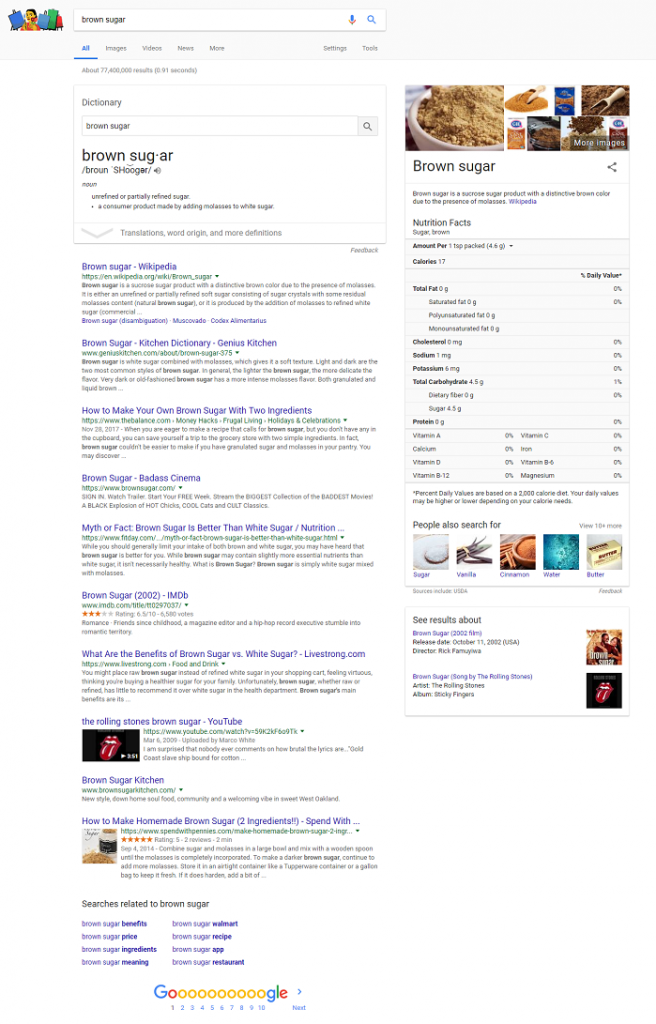
Researchers in Canada found out the average human attention span has fallen from 12 seconds in 2000 to eight seconds. Hence, if you want to really catch users’ attention and get higher rankings, target the search boxes using well-crafted content.
16. Manage Internal Linking
Even if your website isn’t quite new and Google already crawled your pages, it would be wise to check your internal links from time to time. Google comes to rescue you and lets you do a check and report on your internal links pointing to the other pages on your site using Search Console.
Linking to a certain page is vouching for their relevance, utility, and importance. It’s like a certificate of quality given to it. Hence, if a less important page on your website has more links than a more important and truly helpful one, than you should really reassess your internal linking.
17. Be Mobile-Optimized
Smartphone usage is overwhelmingly popular nowadays; the mobile searches have long overrun the desktop ones. There’s this trend now of “mobile-first” designs and updates, yet the truth lies elsewhere. You shouldn’t fit into one category or another, give to one more importance than to the other, but actually go multi-platform. That’s where the great audiences come from.

source: www.smartinsights.com
Hence, given that the web is accessed more and more on the mobile devices, it’s needless to say that you should have your website designed mobile-friendly. And here’s how Google can help you – with a mobile-friendly test tool.
Furthermore, make sure you design your site for all device types and sizes, including tablets, not only desktops and smartphones.
18. Use Synonyms in Content
This one is way simple. Google encourages us to use synonyms when writing and making a piece of content live on our pages because this serves to the greater good of having your website found in response to queries.
Synonyms are variants of the same word or phrase. Google Search is smart enough to return results that not only include the very word typed in the search bar, but also content that means the same thing as the typed-in term. It’s because Google tries hard to guess user’s intent behind the actual query. For example, if you write “professor” and one synonym for that could be “teacher”, the search engine might return results for both “professor” and its synonym “teacher”.
Google tries to understand language, not only terms in general. That’s why synonyms stand very high in Google’s eyes. They help the search engine to better sense the world surrounding users’ words and, hence, what they’d wish to receive in response to their queries. Synonyms are the bridge between users and Google bots.
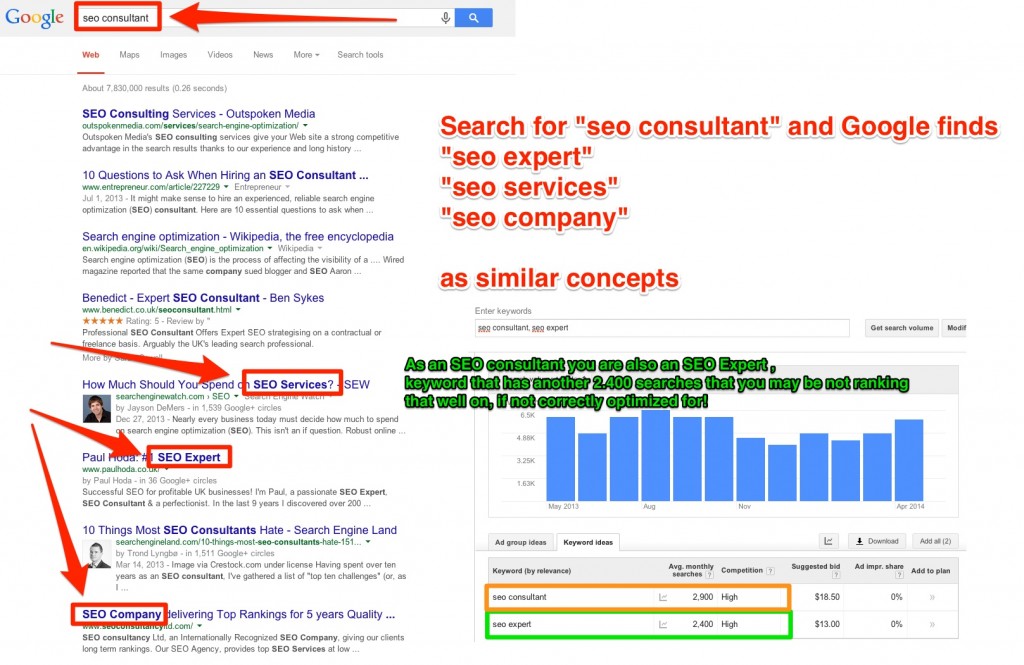
It very much has to do with the fact that content has been overrun in importance by context and search experienced a facelift, now being more of a topical search than the regular one. Context makes it easier for crawlers to return relevant results to queries (or not; it depends). Here‘s where you can set to add synonyms to queries.
| Knowing how Google uses context and semantically related phrases can improve the content you create and how well you optimize pages for particular queries” | |
 |
bill slawski |
| Director of SEO Research at Go Fish Digital / @bill_slawski | |
19. Do Image Optimization
Images often occupy the most visual space on the page and justify the most of the downloaded material and bytes on the web. That is why Google recommends starting optimizing images, which most of the times is seen as both art and science. Plus, users can lose their patience waiting to download something from the web that simply wouldn’t load and have to wait for many seconds to minutes. It’s all about page speed.
The many formats available out there – GIF, PNG, JPG – ask for separate optimizations. There are multiple techniques to do that and here’s where Google comes to rescue us.
20. Switch to HTTPS
Users nowadays want and expect a secure online environment. Preventing unauthorized access to the interactions between the user and your website and encrypting it is a good practice for communication on the web. And that’s why you should secure your website with HTTPS.
If that’s not an argument enough, then maybe you listened to Google, that, starting August 6, 2014, made HTTPS as a ranking signal official. And you know why? Because another top priority to Google besides quality is security. They want to keep their users satisfied and happy, yet secure at the same time. Anyways, this ranking signal doesn’t, of course, weigh that much s high-quality content does, but it’s very important.
HTTPS is a way stronger encryption than the former one, HTTP. The former one can now prevent breaches on websites, hence Google called for HTTPS everywhere.
21. Make Sure to Use Correct Redirects
Make sure you’re using correct redirects, and those would be 301 redirects, not 302s. This is the fittest way sure to provide a clear path to correct pages for users. While a 302 redirect conveys the message of a page content “moved temporarily”, the 301 one means that a page has been permanently moved to a new place. Here’s why 301 redirects are considered (more) useful:
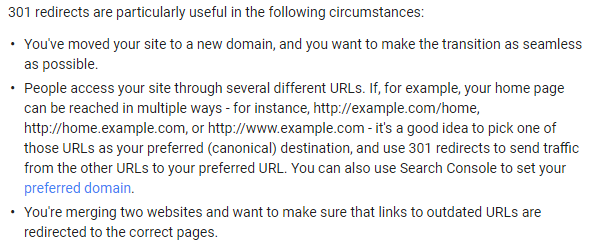
If you want to know how to implement a 301 redirect for your website, here‘s what Google says you should do.
22. Debug Your Pages
In order for your pages to appear in SERPs, you need to have your website crawled by Google. Many times, when doing content optimization, redirects, or content pruning, Google doesn’t immediately crawl it after you make the fix live. Yes, there are times when you can request an accelerated crawl but most times it takes a couple of days for your new content to be live.
Therefore, if you wish to rank as high as possible in search results and be sure you provide the high-quality content you know you have on your website, debug your pages. You can find here how to do that and what tools you can use – some of them having been previously mentioned in our article: Search Console, Fetch as Google, Robots.txt Tester, AMP report, and so on.
Conclusion
And that’s a wrap, boys and gals! Try implementing the above-listed tips coming right from Google’s mouth and there’s no way you won’t benefit from them. This is definitely not a success recipe, but it’s the path to experimenting, experiencing, and eventually getting to know what’s bringing success or not.
We believe we should first do our job, and then expect miracles to happen. By following these steps, you make sure you abide by Google’s wisdom and rules and make them to like you and rank you higher in search results.
But that’s not all. You now know what Google likes, yet we haven’t told you what they don’t like at all. Avoid doing the following and you’ll surely stay out of trouble:
- Take part in link schemes
- Creating pages with little or no authentic content
- Cloaking
- Covert links and text
- Auto-generated content
- Underhanded redirects
- Doorway pages
- Scraping
- Abusing rich snippets markup
- Partner with affiliate websites and have no added value
- Loading pages with irrelevant, stuffed keywords
- Intentionally (or mistakingly) hosting pages with malicious behavior, such as phishing or installing viruses, trojans, or other (duh!)
- Badware
- Deliver automated queries to Google
Mic drop. But please lift it yourselves and tell us your opinion and maybe other tips you know they’re extremely important in order to make Google like you.
The post How To Rank High On Google | 22 Google-Backed Tips To Get Atop Of The Search Results appeared first on SEO Blog | cognitiveSEO Blog on SEO Tactics & Strategies.
How To Rank High On Google | 22 Google-Backed Tips To Get Atop Of The Search Results posted first on http://nickpontemarketing.tumblr.com/
No comments:
Post a Comment